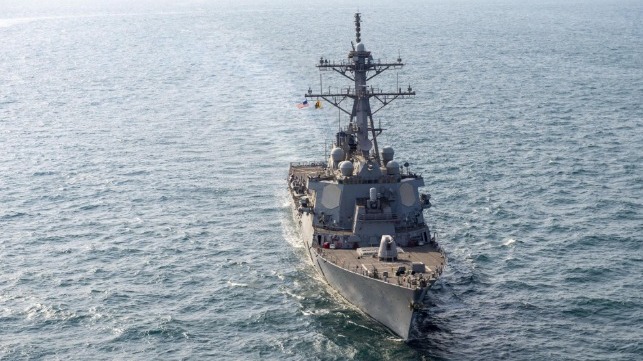U.S. Navy Challenges India's EEZ Navigation Rules

In a rare move, the U.S. Navy conducted a freedom of navigation patrol in the Indian Exclusive Economic Zone (EEZ) without India’s preliminary consent. The service declared that the move was aimed at challenging India’s “excessive maritime claims.”
Even though patrols of this nature in disputed waters like the South China Sea and the Taiwan Strait are common, a similar exercise in Indian waters comes as a surprise, since India is perceived as a natural ally of the U.S. in the Asia-Pacific.
“On April 7, USS John Paul Jones asserted navigational rights and freedoms approximately 130 nautical miles west of the Lakshadweep Islands, inside India’s exclusive economic zone [EEZ], without requesting India’s prior consent, consistent with international law,” said Seventh Fleet in a statement. “India requires prior consent for military exercises or maneuvers in its exclusive economic zone or continental shelf, a claim inconsistent with international law. This freedom of navigation operation (FONOP) upheld the rights, freedoms, and lawful uses of the sea recognized in international law by challenging India’s excessive maritime claims.”
India's Ministry of External Affairs (MEA), in its response, said that the Seventh Fleet's destroyer was “continuously monitored transiting from the Persian Gulf towards the Malacca Straits.” Focusing on clearing the air via diplomatic channels, the note added, “We have conveyed our concerns regarding this passage through our EEZ to the government of USA through diplomatic channels.”
India requires military ships of all nations to obtain prior consent when entering its EEZ, extending up to 200 nautical miles from shore. In the recent past, Chinese research vessels were spotted in the Indian EEZ and were confronted by the Indian Navy and Coast Guard.
Following the official press note, it can be concluded that the US warship was not challenged by its Indian counterparts while it was passing through the EEZ.
The U.S. Navy's Seventh Fleet is remembered in India for its role in the Indo-Pakistani War of 1971, when India liberated East Pakistan (now Bangladesh). Following orders from the Nixon White House (which backed Pakistan in the conflict), a Seventh Fleet task force led by the supercarrier USS Enterprise sailed into the Bay of Bengal as Indian forces moved to seize Dhakha. Naval assets dispatched by the Soviet Union (which backed India) followed the U.S. task force until its departure.
The opinions expressed herein are the author's and not necessarily those of The Maritime Executive.
